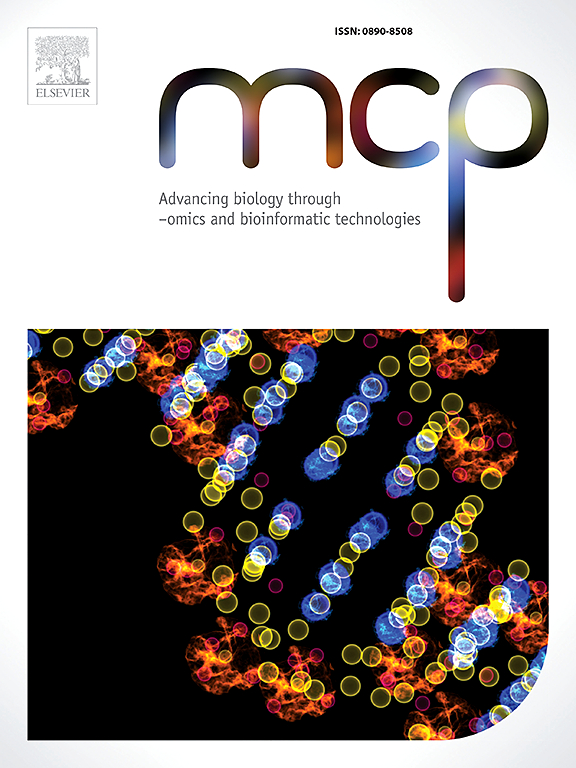IL1RL1+肥大细胞的空间和功能特征揭示了肾癌的免疫调节作用
IF 3
3区 生物学
Q3 BIOCHEMICAL RESEARCH METHODS
引用次数: 0
摘要
背景:白细胞介素-1受体样1 (Interleukin-1 receptor-like 1, IL1RL1,又称ST2)在免疫调节中起关键作用。泛癌分析显示,IL1RL1与细胞免疫功能密切相关;然而,其在透明细胞肾细胞癌(ccRCC)和肿瘤微环境(TME)中的作用仍不清楚。方法:利用癌症基因组图谱(TCGA)和基因表达图谱(GEO)数据库的数据分析IL1RL1的表达模式。利用单细胞RNA测序(scRNA-seq)和空间转录组学(ST)研究IL1RL1在ccRCC中的细胞定位和生物学功能。此外,我们还进行了IL1RL1敲除实验,以探索其在抗原呈递中的潜在作用。结果:与邻近正常组织相比,肾癌组织中IL1RL1表达明显下调。较高的IL1RL1表达与患者预后改善相关,提示其作为独立预后生物标志物的潜力。IL1RL1主要在肥大细胞中表达,其在邻近正常组织中的表达水平高于在肿瘤组织中的表达水平,表明其在肿瘤免疫中具有调节作用。亚群分析显示,il1rl1高的肥大细胞具有丰富的免疫炎症功能,包括白细胞活化、趋化因子产生和抗原呈递。细胞间通讯分析进一步表明,IL1RL1+肥大细胞可能通过MHC-I信号通路增强CD8+细胞毒性T细胞的活化。空间转录组学和多重免疫组织化学(mIHC)证实了IL1RL1+肥大细胞和T细胞在TME内的空间共定位。此外,IL1RL1敲除导致HLA-A表达减少,为其参与抗原递呈提供了功能证据。结论:我们的研究结果强调了IL1RL1+肥大细胞在ccRCC中的免疫调节作用。IL1RL1可能通过调节抗原呈递和CD8+ T细胞活化来促进抗肿瘤免疫,这为其作为肾癌预后生物标志物和治疗靶点的潜力提供了新的见解。本文章由计算机程序翻译,如有差异,请以英文原文为准。
Spatial and functional characterization of IL1RL1+ mast cells reveals immune regulatory roles in renal cancer
Background
Interleukin-1 receptor-like 1 (IL1RL1, also known as ST2) plays a critical role in immune regulation. Pan-cancer analysis has revealed that IL1RL1 is closely associated with cellular immune functions; however, its role in clear cell renal cell carcinoma (ccRCC) and the tumor microenvironment (TME) remains poorly defined.
Methods
We analyzed IL1RL1 expression patterns using data from The Cancer Genome Atlas (TCGA) and Gene Expression Omnibus (GEO) databases. Single-cell RNA sequencing (scRNA-seq) and spatial transcriptomics (ST) were employed to investigate the cellular localization and biological functions of IL1RL1 in ccRCC. In addition, IL1RL1 knockout experiments were conducted to explore its potential role in antigen presentation.
Results
Compared to adjacent normal tissues, IL1RL1 expression was significantly downregulated in renal cancer tissues. Higher IL1RL1 expression correlated with improved patient prognosis, suggesting its potential as an independent prognostic biomarker. IL1RL1 was predominantly expressed in mast cells, with higher levels observed in adjacent normal tissues than in tumor tissues, implying a regulatory role in tumor immunity. Subset analysis revealed that IL1RL1-high mast cells were enriched in immune-inflammatory functions, including leukocyte activation, chemokine production, and antigen presentation. Cell–cell communication analysis further demonstrated that IL1RL1+ mast cells may enhance CD8+ cytotoxic T cell activation via the MHC-I signaling pathway. Spatial transcriptomics and multiplex immunohistochemistry (mIHC) confirmed the spatial co-localization of IL1RL1+ mast cells and T cells within the TME. Furthermore, IL1RL1 knockout led to a reduction in HLA-A expression, providing functional evidence for its involvement in antigen presentation.
Conclusion
Our findings highlight the immune-regulatory role of IL1RL1+ mast cells in ccRCC. IL1RL1 may contribute to anti-tumor immunity through the modulation of antigen presentation and CD8+ T cell activation, offering new insights into its potential as a prognostic biomarker and therapeutic target in renal cancer.
求助全文
通过发布文献求助,成功后即可免费获取论文全文。
去求助
来源期刊

Molecular and Cellular Probes
生物-生化研究方法
CiteScore
6.80
自引率
0.00%
发文量
52
审稿时长
16 days
期刊介绍:
MCP - Advancing biology through–omics and bioinformatic technologies wants to capture outcomes from the current revolution in molecular technologies and sciences. The journal has broadened its scope and embraces any high quality research papers, reviews and opinions in areas including, but not limited to, molecular biology, cell biology, biochemistry, immunology, physiology, epidemiology, ecology, virology, microbiology, parasitology, genetics, evolutionary biology, genomics (including metagenomics), bioinformatics, proteomics, metabolomics, glycomics, and lipidomics. Submissions with a technology-driven focus on understanding normal biological or disease processes as well as conceptual advances and paradigm shifts are particularly encouraged. The Editors welcome fundamental or applied research areas; pre-submission enquiries about advanced draft manuscripts are welcomed. Top quality research and manuscripts will be fast-tracked.
 求助内容:
求助内容: 应助结果提醒方式:
应助结果提醒方式:


